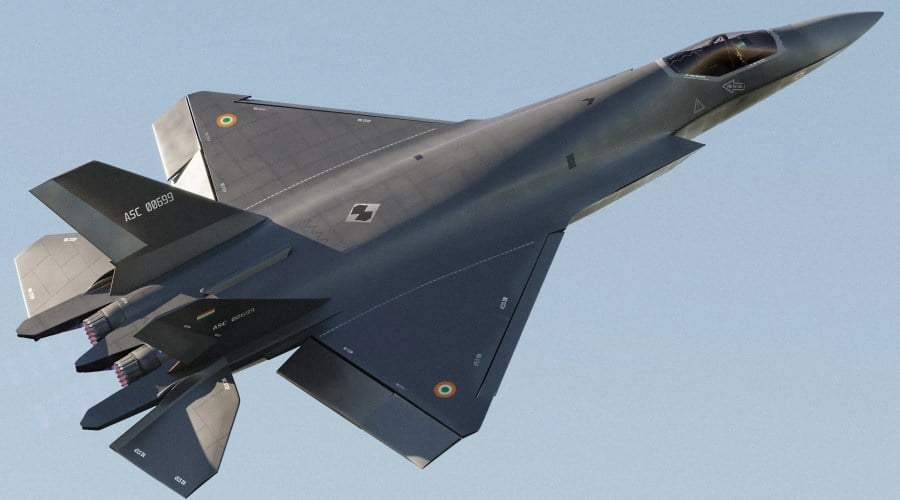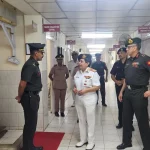Hindustan Aeronautics Limited (HAL) has confirmed that 24 indigenous companies have responded to its call to join a consortium for the production of the Advanced Medium Combat Aircraft (AMCA), India’s first 5.5-generation stealth fighter. The development comes as the Defence Research and Development Organisation (DRDO) prepares to issue an Expression of Interest (EoI) to identify a lead production partner for the ambitious program.
Also Read: HAL Denies Reports of Stalled GE-F414 Engine Talks
The Aeronautical Development Agency (ADA), which has been leading the design of the AMCA since its inception in 2010, will release the EoI in the coming weeks. This marks a critical milestone in India’s push for defence self-reliance under the ‘Atmanirbhar Bharat’ initiative and follows the formal approval of the AMCA project by Defence Minister Rajnath Singh on May 26, 2025.
The AMCA program is expected to serve as the backbone of the Indian Air Force’s future air combat strategy. The first prototype is anticipated between 2026 and 2027, with full-scale production and induction planned for the early 2030s. The stealth fighter will boast features such as a low radar cross-section, supercruise capability, internal weapons bays for stealth missions, and provision for directed energy weapons.
HAL, which has traditionally spearheaded aircraft production for the Indian military, including the LCA Tejas and HTT-40 trainer, is now shifting towards a collaborative model. Under the proposed structure, HAL will lead the consortium while private firms will be allocated equity shares based on their financial and technical contributions. Prominent aerospace and defence firms like Tata Advanced Systems Ltd (TASL), Larsen & Toubro (L&T), and Bharat Forge—already active in global aerospace supply chains—are among the top contenders.
This surge in private interest follows HAL’s March 2025 proposal to create a joint venture with a 50% stake for HAL and 12.5% each for four private entities. The increased number of interested firms signals rising confidence in India’s maturing aerospace ecosystem and growing capabilities of domestic suppliers.
The shift comes at a time when India is seeking to reduce dependence on foreign imports, especially amid rising geopolitical tensions and increased military cooperation between China and Pakistan. The AMCA’s indigenous development is seen as a strategic necessity for maintaining air superiority and achieving technological parity with global peers.
As part of the plan, the ADA will supervise the production of five AMCA prototypes to validate design and performance before full-scale manufacturing. The Empowered Committee for Capability Enhancement of the IAF, led by Defence Secretary Rajesh Kumar Singh, has emphasized the need for accelerated production to meet long-pending fighter squadron shortages.
HAL’s evolving model of public-private collaboration is already yielding positive outcomes in other programs. In the LCA Tejas Mk-1A project, private firms like Vem Technologies and Alpha Tocol are contributing to fuselage production, setting a precedent for larger roles in complex defence projects.
Industry analysts see the AMCA consortium as a transformative step for India’s aerospace industry. If successful, it could reshape HAL’s role from being a sole manufacturer to becoming a systems integrator and supplier for a wider defence manufacturing base.
While the momentum is encouraging, key challenges remain. A major hurdle is the development of a high-thrust indigenous engine capable of powering the stealth fighter. Additionally, strict adherence to production timelines will be essential to ensure timely deployment of the aircraft and fulfil strategic requirements of the IAF and Indian Navy.
The AMCA initiative is expected to not only reinforce India’s airpower but also open global market avenues for Indian defence firms. With a strong foundation now taking shape, the program represents a bold step toward positioning India as a major player in next-generation fighter aircraft production.













